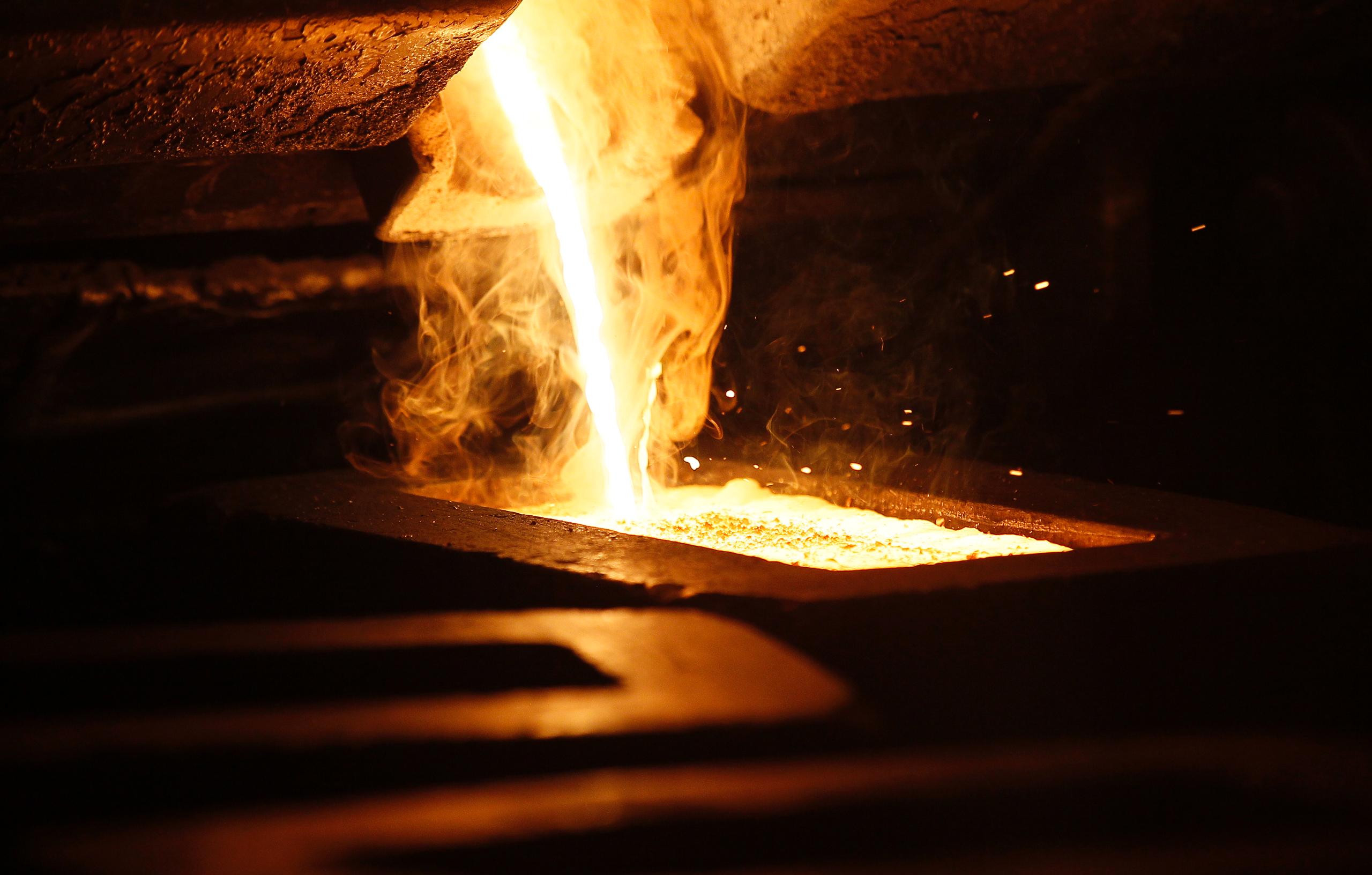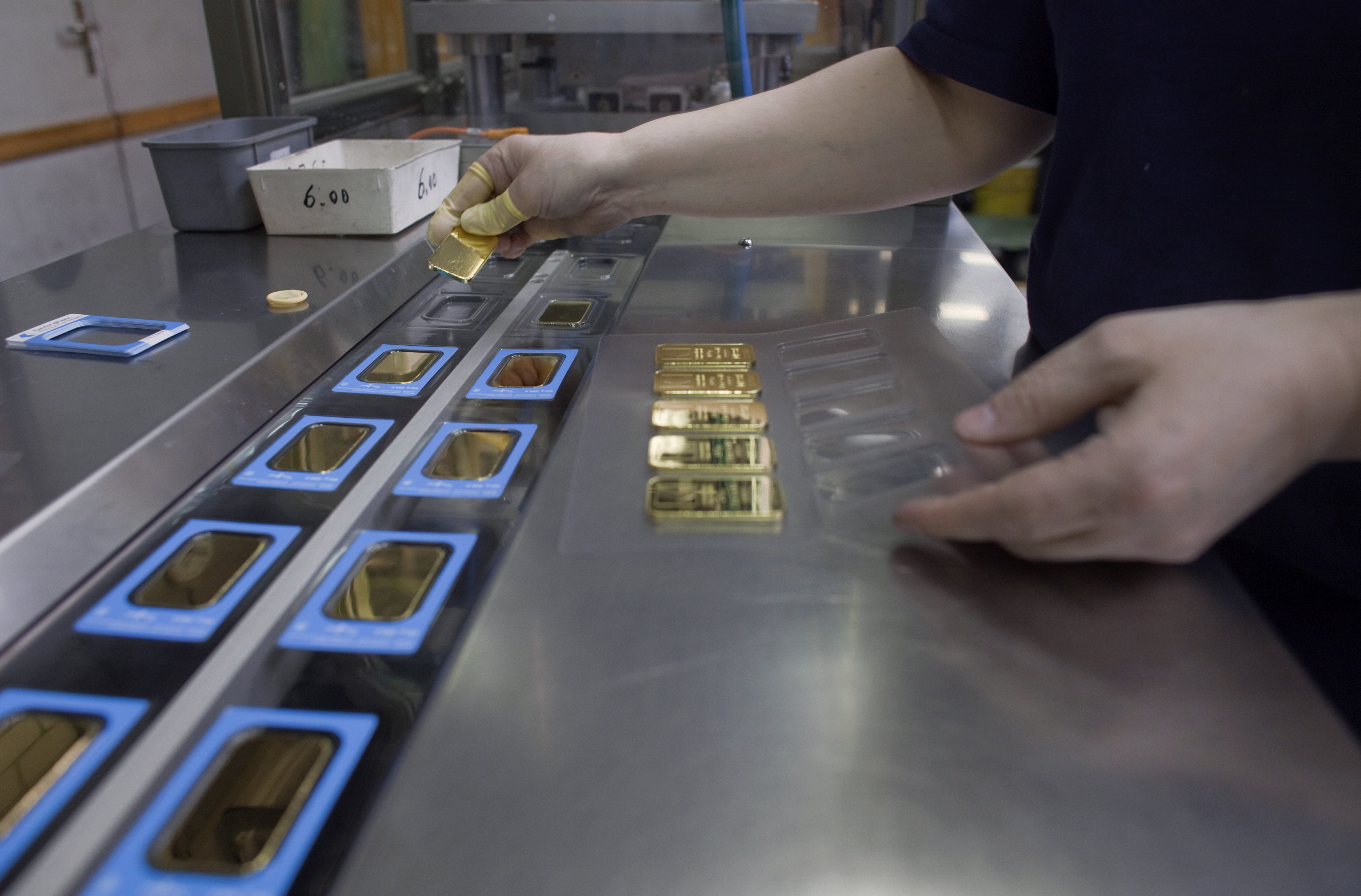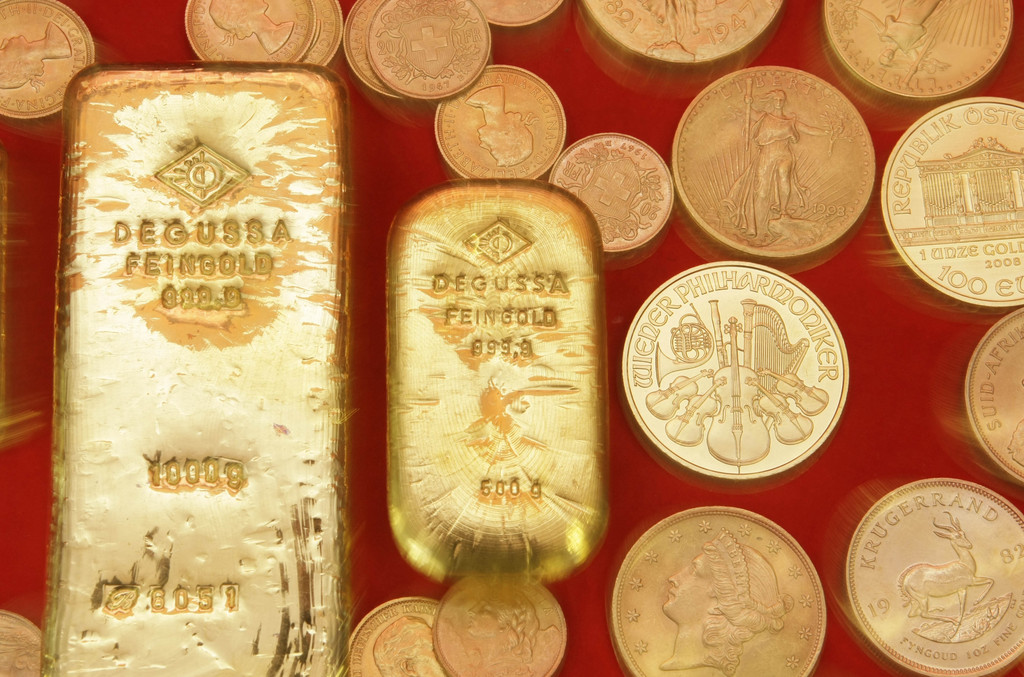A discreet crossroads for the world’s gold

Swiss watches, chocolate and cheese are the stuff of clichés. Gold could be another one, yet Switzerland's status as the world's biggest gold trader is far less well known. In 2016, gold refined in Switzerland made up more than a quarter of its total exports, outpacing even the pharmaceutical industries. But you wouldn't know that from the government's official rankings.
The Swiss Federal Customs Administration recently announced that the pharmaceutical industry has been the largest driver for Swiss exports in 2016. Despite a slowdown last year, the 250 pharma businesses in Switzerland boasted record figures, exporting CHF80.3 billion ($80.1 billion) worth of drugs and other products – a 15% increase compared with the previous year.
The official announcement from Swiss CustomsExternal link, however, did not include gold, other precious stones and works of art – even though the customs office does keep a count of it in its trade statistics. Contacted by swissinfo.ch, a spokesperson for the customs office said that the trade in precious metals is not relevant in assessing Switzerland’s economic situation.
In other words, counting the value of the gold that is refined and sent out of the country – after it is brought into the country as a commodity – would give the misleading impression that the Swiss economy and its GDP is highly dependent on gold. Also, the value of the gold fluctuates sharply, which could lead to an artificial inflation or deflation of the overall Swiss trade figures.
As a result, the customs office did not include in the export tallies the more than 2,000 tonnes of gold worth CHF80.5 billion that it said were “exported” in 2016, just slightly more than the Swiss pharma trade’s exports. By comparison, the Swiss gold export was roughly equal to Sri Lanka’s entire annual GDP in 2015 and accounts for about four-fifths of all the gold that the world extracts in a year (about 2,500 tonnes).
The graphic below represents Switzerland’s exports in 2016 by category of goods. One can see the importance of ‘precious metal trades’ (94% of it being gold) versus the combined ‘chemical and pharmaceutical’ sector.
For several years, the Swiss federal authorities have excluded trade in precious metals from their official foreign trade statistics, because they considered that “the movement of precious metals is more closely related to payment transfers as a substitute for paper money than it is to the movement of commodities to be processed or used,” according to the Federal Customs Administration’s report in November 2013.
Up until 2014, the government did not even release precious metal trade figures. Under the pressure of NGOs and to comply with international statistic standards, a concession was made for the sake of transparency.
How did Switzerland manage to develop into a top-level platform for the gold trade? Primarily through tradition. The Zurich gold market has always been very important. Factors linked to security and efficiency in financial services and to logistics also play a role. Another important reason is that four of the world’s biggest gold refineries are based in Switzerland. These facilities refine almost two-thirds of the world’s gold.
For these reasons, Switzerland remains the world’s top gold importer and exporter. The graphics below from the Observatory of Economic ComplexityExternal link, based on 2014 figures, show the major role that Switzerland plays in the gold trade.

In compliance with the JTI standards
More: SWI swissinfo.ch certified by the Journalism Trust Initiative














You can find an overview of ongoing debates with our journalists here . Please join us!
If you want to start a conversation about a topic raised in this article or want to report factual errors, email us at english@swissinfo.ch.